Every parent knows the power of curiosity in their little ones—those eager hands and sparkling eyes that turn everyday moments into tiny adventures. But did you know that the activities your preschooler engages in can shape their mind and body for years to come? It’s true. The right blend of play and learning builds confidence, sparks creativity, and lays a rock-solid foundation for future growth.
This isn’t about throwing together some finger paints and blocks; it’s about intentional choices that foster exploration, social skills, and cognitive development.
Wondering where to start or how to up your game? You’re in the right place. Let’s dive into preschool activities that are as engaging as they are impactful—and see how simple steps today can unlock a world of potential for tomorrow.
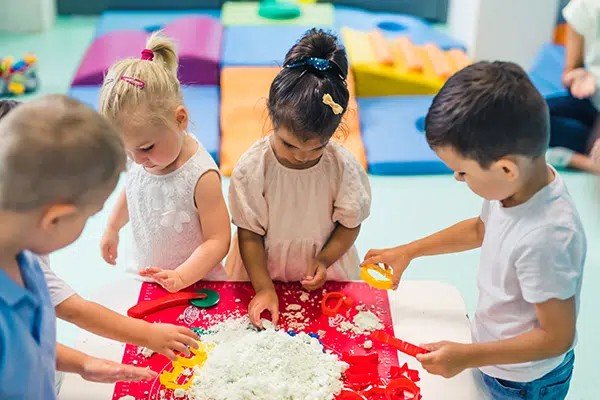
I. Play-Based Learning Activities
Understanding the Concept of Learning Through Play
Play-based learning is an educational approach where children explore and interact with their environment through activities that feel natural and enjoyable. This method encourages curiosity and creativity while helping children develop critical skills like problem-solving, communication, and teamwork. By integrating play into learning, children build a foundation for cognitive and social growth in an engaging way.
Benefits of Play-Based Activities for Cognitive and Social Growth
- Improves problem-solving skills: Through activities like building blocks or puzzles, children learn to think critically and find solutions independently.
- Encourages communication and teamwork: Group games and imaginative play teach children how to express themselves and work collaboratively with peers.
- Enhances emotional regulation: Dramatic play and storytelling help children explore their emotions and develop coping mechanisms in a safe environment.
- Boosts creativity and imagination: Activities like role-playing or themed scenarios spark innovative thinking and help children see the world in new ways.
II. Hands-On Learning Activities
The Power of Sensory Play in Stimulating Development
Sensory play engages multiple senses, making it an excellent tool for fostering cognitive and motor development. Activities like exploring a sensory bin filled with rice or water, finger painting, or playing with textured materials enhance children’s ability to process information.
- Encourages fine motor skill development: Scooping, sorting, and pouring help strengthen hand-eye coordination and dexterity.
- Boosts cognitive growth: Exploring materials like sand or slime allows children to observe cause-and-effect relationships, enhancing critical thinking.
- Supports emotional regulation: Engaging the senses provides calming effects, helping children manage stress or overstimulation.
Hands-On Preschool Lessons That Encourage Curiosity
Interactive activities captivate young minds by turning abstract concepts into tangible experiences. For example, preschool science experiments, such as mixing baking soda and vinegar, introduce cause and reaction in a way that feels like play.
- Stimulates critical thinking: Simple experiments encourage children to ask questions and hypothesize.
- Reinforces learning through repetition: Tasks like sorting objects by color or shape build memory and understanding.
- Encourages exploration: Activities that involve nature, such as collecting leaves, foster curiosity and a love for discovery.
Integrating Interactive Learning Tools into Classrooms
Interactive tools, such as magnetic alphabet tiles or digital apps, enhance preschool lessons by making them engaging and relatable. Combining hands-on tools with traditional methods ensures children grasp concepts effectively.
- Improves number recognition: Tools like counting beads or digital games help children connect numerals with quantities.
- Encourages collaboration: Group activities using manipulatives teach teamwork and communication.
- Supports diverse learning styles: Visual, auditory, and kinesthetic learners benefit from multiple modes of engagement.
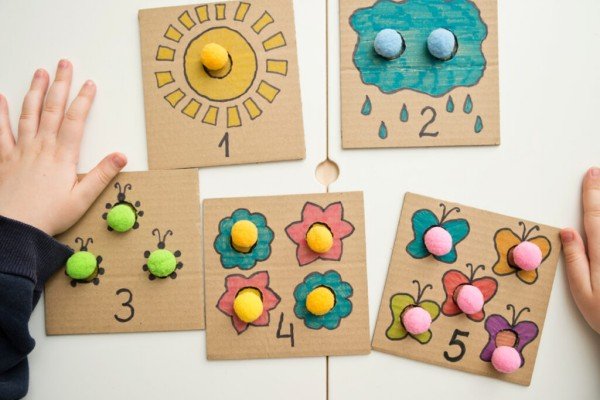
III. Fine Motor Skills Activities
1. Preschool Crafts for Dexterity and Precision
There’s something magical about watching a child carefully thread beads onto a string or cut shapes with scissors. Preschool crafts, such as creating paper collages or decorating picture frames, are excellent for developing precision and hand strength. These activities not only refine dexterity but also encourage imaginative play, as children transform simple materials into unique creations.
Crafts also make it easy to integrate learning concepts. For example, assembling colorful shapes during seasonal activities for preschool helps children recognize patterns and build problem-solving skills while keeping their hands busy. It’s amazing how much growth can stem from glue sticks and a bit of creativity.
2. Preschool Puzzles to Develop Finger Coordination
Puzzles are a timeless favorite, and for good reason—they’re a perfect way to sharpen finger coordination. Whether it’s matching animal shapes or assembling pieces into a larger picture, puzzles challenge kids to think critically while improving fine motor skills. They’re a staple in many preschool learning centers for fostering concentration and perseverance.
For an added layer of engagement, themed puzzles can be introduced during preschool exploration activities. Think puzzles of the solar system or ones featuring seasonal imagery. These tie-ins with larger learning themes keep children intrigued while subtly boosting their hand-eye coordination.
3. Art Projects That Enhance Fine Motor Development
Art projects like painting with cotton swabs or creating clay sculptures are more than just fun—they’re an essential part of early childhood activities. These tasks encourage children to manipulate tools and materials in ways that strengthen small muscle groups. Preschool art projects also nurture creativity, allowing children to express themselves while they refine their motor skills.
Introducing tactile elements, such as sand art or textured stamping, enhances sensory play and keeps children excited to experiment. The variety ensures there’s something for every child, whether they love getting messy with paint or enjoy precise detail work.
IV. Gross Motor Skills Activities
1. Outdoor Activities for Building Strength and Balance
Outdoor play is a cornerstone of preschool physical activities. Running through obstacle courses, balancing on beams, or climbing playground structures are fantastic ways to build gross motor skills. These outdoor activities for preschoolers also develop spatial awareness, as children learn to navigate their environment confidently.
Nature activities for preschoolers, such as hopping between tree stumps or gathering natural materials for crafts, combine physical activity with exploration. These moments in nature are invaluable for fostering curiosity and building a love for the outdoors.
2. Preschool Movement Games for Coordination and Flexibility
Games that involve movement are an effective way to teach coordination and flexibility. Activities like duck-duck-goose, relay races, or music and movement games not only engage children physically but also improve their reaction times and rhythm. Incorporating these games during circle time activities ensures that physical activity becomes an integral part of the day.
Preschool music activities, such as dancing to different tempos or following guided movements, bring rhythm and coordination into play. These interactive learning opportunities make it easy to blend fun with fitness.
3. Indoor Activities to Encourage Active Play
Rainy days don’t have to mean a loss of active play. Indoor activities like yoga for kids, beanbag toss games, or simple scavenger hunts keep children moving and engaged. These preschool classroom games challenge gross motor skills while teaching focus and teamwork.
Incorporating imaginative play, such as pretending to be animals crawling through tunnels or jumping from lily pad to lily pad, transforms indoor spaces into dynamic arenas for physical development. This creative use of space ensures that children remain active, no matter the weather.
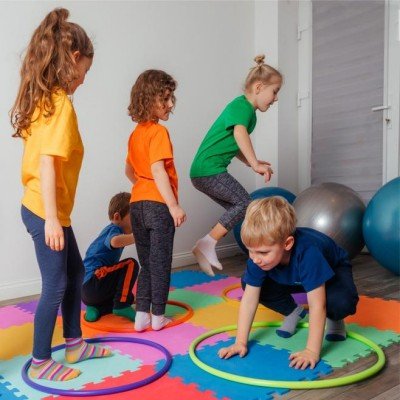
V. Early Literacy Activities
1. Storytime for Vocabulary and Imagination
Storytime is the perfect way to captivate a child’s imagination while expanding their vocabulary. Whether it’s classic tales or modern favorites, preschool storytime introduces new words and ideas in a context that’s easy to understand. As children listen and engage, they naturally develop language skills and build a love for books.
Interactive elements, like acting out parts of the story or asking open-ended questions, turn storytelling into an active learning experience. These moments not only entertain but also deepen comprehension and critical thinking.
2. Alphabet Recognition Through Fun Games and Activities
Preschool alphabet activities, such as letter-matching games or alphabet hunts, make learning letters exciting. These early literacy activities are essential for laying the groundwork for reading and writing. By using hands-on tools like magnetic letters or tactile cards, children connect visual symbols with their corresponding sounds.
These games can also tie into larger themes. For example, during preschool STEM activities, letters can be incorporated into building blocks or puzzles, linking literacy to other key learning areas seamlessly.
3. Encouraging Storytelling to Boost Creativity and Confidence
Encouraging children to create their own stories fosters creativity and builds confidence. Storytelling for preschoolers can begin with simple prompts or props, like puppets or picture cards, to spark their imagination. This practice helps children organize their thoughts and share them in a coherent way.
Collaborative storytelling in small groups also strengthens social skills, as children take turns contributing to the narrative. It’s a wonderful way to blend early literacy with the development of emotional intelligence and communication skills.
VI. Math Activities for Preschoolers
1. Engaging Number Recognition Games
Number recognition games turn learning into a fun and rewarding experience. Activities such as hopscotch with numbers, matching cards with quantities, or counting objects in a room are great for building foundational math skills.
- Reinforces number concepts: Matching numbers with quantities helps children understand numerical relationships.
- Encourages physical activity: Movement-based games, like jumping to numbered spots, combine gross motor skills with learning.
- Fosters independent learning: Self-guided games encourage exploration and confidence in numerical skills.
2. Using Everyday Items for Counting Activities
Everyday items, such as buttons, blocks, or fruit, can make counting relatable and enjoyable. Simple tasks like sorting buttons by color or creating patterns with objects teach math concepts in practical ways.
- Connects math to real life: Using common objects demonstrates how numbers are part of everyday experiences.
- Develops organizational skills: Sorting and grouping tasks build logical thinking.
- Enhances engagement: Children find familiar items more exciting and easier to relate to.
3. Teaching Shapes and Patterns Through Play
Shapes and patterns are essential for early geometry skills, and playful activities make these concepts accessible. Building mosaics, creating designs with blocks, or arranging nature items like leaves in patterns are highly effective.
- Improves spatial awareness: Recognizing and fitting shapes strengthens problem-solving abilities.
- Teaches symmetry and balance: Pattern-making introduces children to foundational math and art principles.
- Encourages creativity: Shape-related crafts and activities allow children to explore artistic expression while learning.
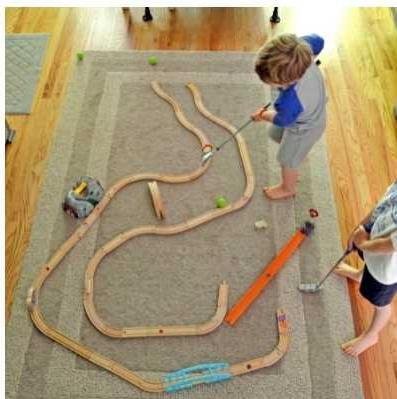
VII. Dramatic and Imaginative Play Activities
1. Role-Playing Games for Emotional Expression
Dramatic play opens the door to emotional growth. Whether children are pretending to be doctors or chefs, role-playing games let them explore different perspectives and express feelings in a safe environment. These activities encourage empathy and help them navigate social situations with confidence.
Pairing dramatic play with props, like puppets or costumes, adds depth to the experience. It’s a powerful way to blend creative play ideas with emotional and cognitive development, making it a cornerstone of early childhood activities.
2. Collaborative Play to Build Social Skills
Group scenarios during imaginative play foster teamwork and communication. For example, building a pretend marketplace in preschool learning centers allows children to collaborate, negotiate roles, and solve problems together. These preschool group activities are invaluable for building social skills.
Adding storytelling for preschoolers into collaborative settings strengthens their ability to articulate ideas and listen actively. By combining these elements, children learn to work harmoniously while honing essential interpersonal skills.
3. Encouraging Problem-Solving Through Imaginative Scenarios
Imaginative play naturally sparks problem-solving. Scenarios like navigating a “pirate ship” or setting up a “rescue mission” encourage kids to think critically and make decisions. These preschool problem-solving activities are not only fun but also nurture creativity and adaptability.
Incorporating sensory play, such as using sand to create a desert landscape or water to simulate a river, enriches these scenarios. This blend of imagination and tactile exploration makes learning both dynamic and memorable.
VIII. Music and Movement Activities
1. Rhythmic Development Through Preschool Music Games
Music and movement go hand in hand in preschool education. Activities like clapping to rhythms or dancing to songs help children develop coordination and a sense of timing. These preschool music activities are also great for fostering gross motor skills activities and body awareness.
Integrating instruments, such as tambourines or maracas, turns music time into a fully immersive experience. This approach ensures that children engage physically while developing an appreciation for rhythm and melody.
2. Using Instruments to Foster Creativity and Coordination
Introducing simple instruments during early childhood creative activities offers dual benefits. Children not only enhance their fine motor skills by handling drums or xylophones but also unleash their creativity through self-expression. These activities encourage exploration and interactive learning.
Combining instruments with storytelling for preschoolers—like creating sound effects for a story—adds a layer of engagement. It shows children how music can be a tool for expression and storytelling, making lessons even more impactful.
3. Group Singing Activities for Confidence and Teamwork
There’s something magical about a room full of children singing together. Group singing activities build confidence as children project their voices and learn lyrics. These collaborative activities for preschoolers also teach the value of teamwork, as every voice contributes to the whole.
Using songs tied to seasonal activities for preschool—like holiday carols or springtime melodies—makes the experience even more meaningful. Such activities seamlessly blend culture, learning, and joy, creating moments that resonate long after the music stops.
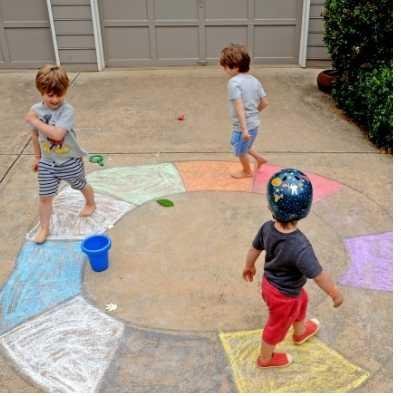
IX. Themed and Seasonal Activities
1. Benefits of Using Themes in Preschool Activities
Themes give preschool activities a sense of focus and cohesion. For instance, a week centered around farm life might include hands-on learning like crafting animal shapes and playing pretend with barnyard toys. These preschool themed activities make learning engaging while introducing concepts like animal habitats and teamwork.
Thematic learning helps reinforce skills by tying lessons across subjects together. Activities such as counting during a math lesson or reading farm-related stories during circle time demonstrate how concepts connect. This holistic approach nurtures critical thinking and creativity.
2. Incorporating Seasonal Changes into Preschool Curricula
Seasonal activities for preschool bring real-world changes into the classroom, making lessons more relevant and exciting. Nature activities for preschoolers, like observing leaves in the fall or planting flowers in the spring, offer sensory play experiences that teach children about their environment.
By aligning curricula with the seasons, educators can incorporate themes like weather, holidays, and animal migrations. These connections turn abstract concepts into tangible, memorable lessons, reinforcing what children observe outside of school.
3. Aligning Activities with Holidays and Celebrations
Holidays provide natural opportunities to introduce new topics and reinforce cultural awareness. Preschool crafts tied to celebrations, like making lanterns for Lunar New Year or decorating eggs for Easter, blend art with cultural learning. These activities also encourage fine motor skills development.
Interactive learning during holiday-themed games or songs fosters a festive atmosphere while reinforcing important concepts. This joyful approach makes children eager to participate and learn.
X. Preschool Learning Center Activities
The Role of Learning Centers in Skill Development
Preschool learning centers are dedicated areas within a classroom where children engage in specific types of play or study. These centers focus on skills like reading, math, or sensory exploration and offer children the freedom to learn at their own pace.
- Promotes independence: Children choose activities that match their interests and abilities.
- Encourages focused learning: Each center is designed to target specific developmental goals, such as literacy or motor skills.
- Supports varied learning styles: Centers provide options for visual, auditory, and kinesthetic learners.
Examples of Activities at Preschool Exploration Centers
Each learning center can be tailored to enhance a particular skill. For example:
- Sensory center: Sandboxes, water tables, or tactile boards for sensory play.
- STEM center: Building blocks or preschool science experiments for hands-on learning.
- Art center: Craft supplies for preschool art projects, encouraging creativity and fine motor development.
Tips for Creating Engaging and Budget-Friendly Learning Stations
Creating effective centers doesn’t have to break the bank. Repurposed materials and seasonal themes can refresh the space affordably.
- Use everyday items: Bottle caps for counting or cardboard for building structures.
- Rotate materials: Regularly changing puzzles or storybooks keeps activities exciting.
- Add themed elements: Seasonal activities, like fall leaves or winter snowflakes, keep children engaged and curious.
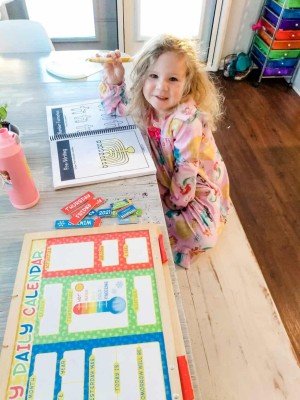
XI. Collaborative and Game-Based Activities
1. Group Games That Encourage Teamwork in Preschool
Collaborative activities for preschoolers, such as group games like parachute play or relay races, teach valuable teamwork skills. These preschool group activities require children to communicate, take turns, and solve problems together, building social skills in a fun, active way.
Incorporating games during circle time activities enhances engagement and makes lessons interactive. It’s a simple yet effective way to teach cooperation and coordination.
2. Educational Games for Critical Thinking and Problem-Solving
Preschool educational games are excellent tools for sharpening critical thinking. Board games that involve strategy, such as memory matching, or STEM activities that encourage building structures, challenge kids to think ahead and troubleshoot.
These games are particularly effective when integrated into play-based learning environments, where children feel free to experiment without fear of failure. Such experiences strengthen their confidence and resilience.
3. Fun Preschool Games That Reinforce Key Skills
Reinforcing essential skills can be both enjoyable and effective. Activities like scavenger hunts for numbers or letters combine preschool number recognition with physical movement. These preschool classroom games not only make learning dynamic but also reinforce motor coordination.
Integrating creative play ideas, like pretending to be explorers or using music as part of movement-based games, keeps children fully engaged. These activities highlight the power of fun in fostering deep and lasting learning.
XII. Nature-Based Activities
1. Outdoor Exploration Activities for Environmental Awareness
Nature-based activities allow children to engage their senses while learning about the world around them. Outdoor exploration activities, such as observing insects or collecting leaves, foster curiosity and environmental awareness. These hands-on learning experiences not only enhance understanding but also build a lasting appreciation for nature.
Incorporating structured outdoor activities for preschoolers, such as scavenger hunts or guided walks, introduces concepts like biodiversity and sustainability in an accessible way. These experiences create meaningful connections between the classroom and the natural world.
2. Using Natural Materials in Preschool STEM Projects
Natural materials, like stones, sticks, and leaves, are excellent for preschool STEM activities. Building simple structures or creating patterns with these items teaches children about geometry, balance, and measurement. These projects also integrate sensory play, as children feel textures and experiment with arrangements.
Nature-based STEM projects can be paired with math activities for preschoolers to introduce counting, sorting, and categorization. Combining creativity with problem-solving makes these lessons both impactful and fun.
3. Seasonal Nature Activities for Hands-On Learning
Seasonal activities for preschool provide opportunities for children to observe and celebrate changes in their environment. Whether it’s making leaf rubbings in the fall or planting seeds in the spring, these projects bring science to life. Preschool learning centers can even include nature tables to display collected items, enhancing the learning experience.
These seasonal projects not only teach science but also encourage creative play ideas. Activities like creating art with pressed flowers or building snow sculptures blend education with imagination, making learning memorable.
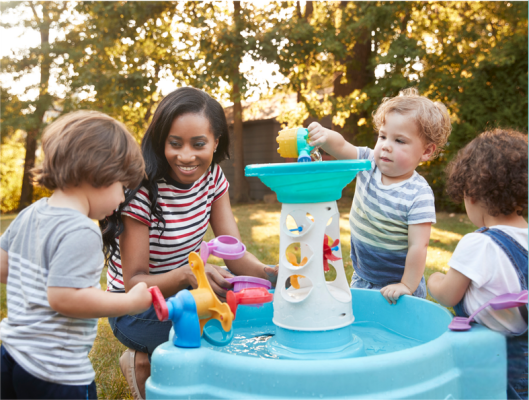
XIII. Physical Activities for Daily Routines
1. Promoting Health Through Preschool Physical Activities
Physical activities are essential for fostering healthy growth and development in preschoolers. Activities like running, jumping, and dancing help children build strength, endurance, and coordination. These exercises are not only beneficial for physical health but also for emotional well-being.
- Strengthens muscles and bones: Activities such as climbing or balancing improve core strength and motor skills.
- Boosts emotional regulation: Physical movement helps children release excess energy, reducing anxiety and improving focus.
- Encourages lifelong habits: Introducing movement-based routines early instills a love for staying active.
2. Scheduling Active Play for Maximum Benefits
Incorporating active play into the daily schedule ensures children have ample opportunities to move and learn. Alternating between structured and unstructured activities keeps the day dynamic and engaging.
- Structured activities: Games like obstacle courses or preschool movement activities provide targeted skill-building.
- Unstructured play: Free time on playgrounds or open spaces allows children to explore at their own pace.
- Balance with quiet times: Pairing physical activities with calm moments like preschool story time helps children reset and stay engaged.
3. Ensuring Safety During Physical Activities
Safety is paramount when incorporating physical activities into daily routines. Proper supervision, child-friendly equipment, and clear guidelines ensure a secure and enjoyable experience.
- Choose age-appropriate activities: Select games and equipment suited to preschoolers’ abilities to avoid overexertion or injury.
- Establish rules: Teach children about safe movement and respecting boundaries during group activities.
- Provide proper gear: Use soft mats for indoor play or helmets for biking to reduce risk.
Conclusion:
Preschool activities are the building blocks for lifelong learning, blending creativity, exploration, and play to foster well-rounded development. Thoughtfully planned activities cater to children’s unique needs, ensuring every child thrives academically, socially, and physically.
For educators and businesses seeking quality materials to enhance their programs, EverWoody offers diverse and customizable wooden products to support these meaningful learning experiences. Explore our wholesale solutions and make every activity impactful.





